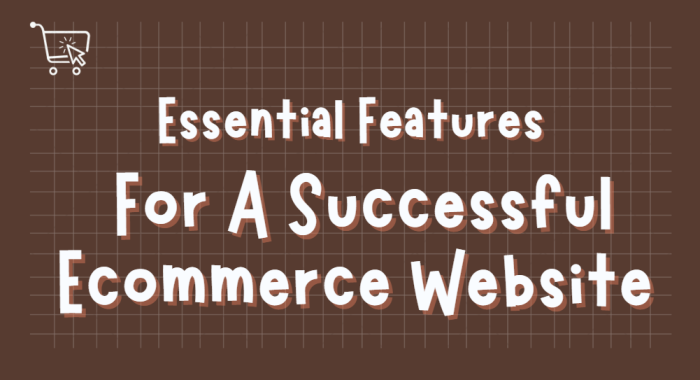In the digital age, the internet is a vast ocean of information. With so much data available online, it can be challenging to find specific information quickly and easily. This is where directory websites come in handy.
A directory website provides users with categorized and niche-specific information that helps them find what they’re looking for efficiently. If you’re interested in building a directory website, WordPress is an excellent platform to use due to its flexibility and availability of plugins and themes. Building a successful directory website requires careful planning and execution.
It involves choosing a niche, researching the competition, implementing monetization strategies, branding your site, optimizing for SEO, selecting a reliable web host, utilizing recommended plugins for directories, creating custom post types and taxonomies, and adding front-end forms for user-generated content.
By following these steps correctly and using the right tools, anyone can build an effective online directory site that provides value to its users while generating revenue through advertising or other means. In this article, we’ll explore each of these steps in detail to help you master the art of building a successful directory website with WordPress.
Key Takeaways
- WordPress allows for easy creation of directory sites, which can be useful for categorized and niche information, and offer potential for monetization.
- Plugins, such as the free and easy-to-set-up Business Directory plugin, can be used to extend the functionality of WordPress for creating directories.
- Custom post types and taxonomies can be used to organize listings data, and extensive programming knowledge or coding resources can be used to build custom post templates.
- WP Engine offers fast and reliable hosting for directory websites, with a variety of WordPress hosting plan options and solutions and tools for building online directory sites.
Choosing a Niche
When building a directory website with WordPress, one of the initial steps is to carefully choose a niche that aligns with market demand and offers monetization potential.
This involves identifying a specific target market and evaluating what type of listings to specialize in.
The chosen niche should also fit well with the desired business model, which could include charging for listings, selling advertising space, or using membership/subscription-based models.
To determine the best niche for your directory website, conducting a competitive analysis is crucial.
It’s important to research what businesses are currently offering similar services and how they’re being marketed. This can help identify gaps in the market that can be filled by your directory website.
By choosing a unique angle or focusing on an underserved area of interest, you can differentiate yourself from competitors and attract both listers and users to your platform.
Researching Competition
Researching competitors in the chosen niche is a crucial step toward creating a successful directory, as it allows for identifying gaps in the market and potential areas for differentiation.
Analyzing competition can reveal what listings are already available and how they are presented to users. It can also provide insights into pricing strategies, marketing tactics, and user engagement.
Market research techniques such as online surveys, social media analysis, and keyword research can help identify competitors’ strengths and weaknesses.
Competitor analysis strategies may involve examining their website design, content strategy, SEO practices, backlink profiles, and customer reviews.
By analyzing the competition thoroughly, directory owners can develop unique value propositions that set them apart from others in the same niche.
With this knowledge in hand, we can move on to exploring monetization methods.
Monetization Methods
Various monetization methods can be employed for online directories, such as charging for listings, selling advertising space, or implementing membership/subscription-based models. These methods offer the directory owner a chance to generate revenue from their site while providing value to users and advertisers.
To effectively implement these monetization methods, it is essential to consider various factors such as promoting listings effectively, customizing directory templates, and implementing payment gateways that are user-friendly and secure.
One way to promote listings is by offering premium listing options that include more features or higher visibility on the website. Directory owners can also sell advertising space on their Websites or use Google Adsense to generate ad revenue.
Membership or subscription-based models can provide exclusive access to certain listings or features of the website for paying members. It is essential to customize directory templates and make them visually appealing while ensuring they are easy to navigate for both listers and users.
Implementing payment gateways that are user-friendly and secure is crucial in building trust with users who submit payments through the site. Overall, implementing effective monetization strategies requires careful consideration of what will work best for your niche market and target audience.
To successfully brand your directory website, it is important to choose a name that reflects your niche market and communicates the purpose of your site clearly. The design of your website should be visually appealing while maintaining consistency in color scheme and font style across all pages of the site.
Additionally, creating content regularly through blogging can help build a community around your directory website while increasing traffic through search engine optimization (SEO).
By focusing on branding elements like these along with effective monetization strategies discussed earlier, you can create a successful online directory business model that will attract both listers and users alike.
Branding Your Directory
Creating a brand for a directory website is crucial in establishing its identity and attracting both listers and users. The name of the site should be catchy, unique, and easily memorable while conveying its purpose clearly.
Design elements such as colors, font styles, and graphics should be chosen carefully to create an appealing visual experience that aligns with the website’s intended audience. A good communication style is also important in creating a connection with visitors by using clear language that resonates with them.
In addition to design elements, content can also help build the brand of a directory website. Consistently providing high-quality content that is relevant to the niche market can establish trust and credibility among visitors.
It can also create a sense of community around the site by encouraging user engagement through comments or social media sharing. By carefully crafting their branding strategy, directory websites can stand out from their competitors and attract more traffic to their sites through word-of-mouth recommendations or online advertising.
Moving forward into the next section about SEO and keyword research, it is important to consider how branding ties into these strategies for optimizing search engine results pages (SERPs).
SEO and Keyword Research
Optimizing a directory website for search engines is a crucial step in increasing its online visibility and attracting organic traffic, which can ultimately lead to higher revenue generation.
Keyword optimization plays a key role in this process, as it involves researching and strategically placing relevant keywords throughout the website’s content, including titles, descriptions, categories, and tags. Additionally, using Google Analytics can provide valuable insights into user behavior on the website, allowing for continuous improvement of the site’s structure and content.
Link building is another important aspect of SEO for directory websites. This involves acquiring backlinks from reputable sources to increase the website’s authority and credibility in search engine rankings.
Other techniques such as guest blogging on relevant industry websites or participating in online forums can also contribute to link-building efforts. By implementing these strategies effectively, directory websites can improve their online presence and attract more visitors to their listings.
As well as optimizing your website for search engines it is important to contact businesses directly about listing opportunities in order to monetize your directory site effectively.
Contacting Businesses
One effective strategy for monetizing a web directory is to directly contact businesses in the niche and offer them listing opportunities. This can be done through various methods such as attending networking events, email outreach, or even cold calling.
By contacting businesses directly, you can offer them a platform to showcase their products or services to a targeted audience. This not only benefits the business by increasing their exposure and potential customer base but also generates revenue for your web directory.
In addition to contacting businesses, offering premium listings is another way to generate revenue for your directory website. These listings provide additional features and benefits for businesses who are willing to pay more for increased visibility on your website.
By offering both free and premium options, you can cater to different levels of business needs while still generating income from those who are willing to invest in their online presence.
Premium Listings
Premium listings on a web directory provide businesses with increased visibility and additional features, while also generating income for the directory owner. By charging for premium listings, directories can offer businesses the ability to appear at the top of search results, highlight their listing, or include additional information such as photos or videos.
This added exposure can lead to increased traffic and sales for businesses, making it a worthwhile investment.
To implement premium listings on a directory website, payment gateways must be set up to process payments securely. Once payment options are available, there are several benefits that can be offered to those who purchase premium listings.
These may include higher placement in search results, customizable listing forms that allow for more detailed information about the business or product being listed, and even featured promotions on the homepage of the directory site.
With these added features and benefits, premium listings become an attractive option for businesses looking to stand out on a crowded web directory.
As we move into discussing advertising and Adsense in the next section, it is important to note that monetization options beyond premium listings do exist for web directories.
Advertising and Adsense
Maximizing revenue potential for web directories can be achieved through implementing advertising and Adsense strategies. By utilizing ad targeting techniques, web directory owners can ensure that advertisements are displayed to the most relevant audience, increasing the likelihood of clicks and conversions.
Additionally, implementing multiple revenue streams such as banner ads, sponsored listings, and affiliate marketing can further increase earnings.
Effective ad placement is also crucial for maximizing revenue potential. Placing ads in prominent positions such as above the fold or within search results can increase visibility and click-through rates.
However, it is important to balance the amount of advertising with user experience to avoid overwhelming visitors with too many ads. By carefully considering these factors when implementing advertising and Adsense strategies, web directory owners can create a profitable business model while still providing value to their users.
Moving on from advertising and Adsense strategies, let’s explore membership models as another potential revenue stream for web directories.
Membership Models
Implementing membership models is a viable strategy for generating revenue in web directories, as it allows for monetization through recurring fees and exclusive access to premium content or features.
Creating tiers of subscription plans with various levels of benefits can attract users who are willing to pay for additional perks, such as increased visibility on the site or the ability to add more listings. Offering free trials or discounted rates for new members can also entice users to sign up.
However, it is important to balance the benefits offered to users with the cost of maintaining and providing those benefits. It may be necessary to continually update and improve the premium features to keep subscribers interested and justify their continued payments.
Additionally, clear communication about what each membership level entails is crucial in order to avoid confusion or dissatisfaction among members. With careful planning and execution, implementing membership models can be a successful method of monetizing directory websites while providing added value for users.
Attracting buyers and sellers involves understanding the target market’s needs and preferences, as well as effectively promoting the benefits of using the directory website. By creating a user-friendly platform with intuitive navigation, detailed listing information, and search functionality that yields relevant results, potential buyers will be more likely to use the site regularly.
Promoting the advantages for businesses listing on the site – such as increased exposure and potential sales – can also help attract sellers. Effective marketing techniques include SEO optimization, targeted advertising campaigns on social media platforms or other relevant sites, and email marketing outreach campaigns tailored towards specific niches within this space (such as real estate agents), among others.
Ultimately attracting both buyers and sellers requires a combination of effective platform design coupled with strategic marketing outreach efforts aimed at building awareness around your brand!
Attracting Buyers and Sellers
Attracting both buyers and sellers to a web directory involves understanding their needs, and preferences, and effectively promoting the benefits of using the platform. Marketing strategies are crucial in creating awareness about the directory website to potential users. Utilizing social media platforms, email marketing campaigns, and paid advertising can help attract traffic to the site.
User engagement is also important in retaining existing buyers and sellers while attracting new ones. A user-friendly interface with easy navigation and clear instructions for adding listings can enhance user experience.
Additionally, offering incentives such as discounts or promotions for premium listings can encourage engagement. Payment gateways should also be available for ease of transactions between buyers and sellers. Offering multiple payment options such as PayPal or Stripe can accommodate different preferences among users.
To set up WordPress for a directory website, several elements need to be established before adding features and content.
Setting Up WordPress
Establishing a solid foundation for the WordPress platform is crucial in creating a successful and user-friendly web directory. Customizing themes to reflect the brand’s desired image can help attract and retain visitors. Additionally, taking measures to ensure WordPress security can protect against potential hacks or data breaches, providing peace of mind for both the website owner and users.
Implementing SEO best practices during setup can also improve search engine rankings, leading to increased visibility and traffic.
Before moving on to choosing a web host, it’s important to consider these foundational steps as they lay the groundwork for the rest of the directory website-building process. By customizing themes, ensuring security measures are in place, and optimizing for SEO from the beginning, website owners set themselves up for success in creating a robust and user-friendly online directory.
Choosing a Web Host
Choosing a reliable web host is an essential step in ensuring the smooth operation and performance of a directory-based online platform. For directory websites built with WordPress, managed WordPress hosting plans are recommended for optimal results. Two popular options are WP Engine and Kinsta, both offering high-performance hosting solutions designed specifically for WordPress sites.
Kinsta stands out as a top choice due to its speed, security, and scalability. With features such as automatic daily backups, site migrations, and staging environments, Kinsta offers everything needed to build and maintain a successful directory website.
In addition to these benefits, Kinsta’s support team is available 24/7 to assist with any issues that may arise. As you consider your options for building your directory website on WordPress, keep in mind the importance of choosing a reliable web host like Kinsta or WP Engine to ensure the best possible user experience for your visitors.
Moving forward into the recommended directory plugin section, there are several top plugins available for building directories within WordPress. One such option is the Business Directory Plugin which allows users to easily create listings and accept payments through various payment gateways including Stripe and PayPal.
Recommended Directory Plugin
One of the essential tools for creating a successful online platform with categorized and niche information is the integration of a reliable and feature-rich plugin, which can facilitate easy creation and management of listings while offering monetization opportunities.
In this regard, the Business Directory plugin is a recommended option for building directory websites with WordPress. This free-to-use plugin offers customization options such as categories for listings, manual approval of new listings, and payment gateways through Authorize.net in its basic version.
For those looking for premium features such as support for Stripe, PayPal, and Authorize.net or more advanced customization options, the Business Directory plugin also has a pro version available at an affordable price.
Overall, using plugins like Business Directory can simplify the process of creating a directory website with WordPress while providing users with necessary features to ensure a smooth user experience. With payment gateway options and customizable settings available through this plugin, it can be an essential tool when building your own directory site.
Moving forward to the next section about custom post types and taxonomies will provide further insight into building an effective directory website on WordPress.
Custom Post Types and Taxonomies
Custom post types and taxonomies are fundamental to organizing information on a website, with statistics showing that websites using custom post types have a 13.6% higher conversion rate than those without.
Custom post types allow for the creation of different data structures beyond just posts and pages, while custom taxonomies provide a way to categorize this content. By implementing these features, directory website owners can create organized and easily searchable listings.
Creating custom templates is an important step in optimizing the performance of a directory website. This allows for the customization of how listings are displayed on the front-end, which can greatly improve user experience.
Implementing filters is another key strategy for improving usability, as it allows users to find exactly what they are looking for quickly and efficiently. Additionally, optimizing performance through caching and other techniques can help ensure that the website runs smoothly even as traffic increases.
With these strategies in place, directory websites built with WordPress can offer an intuitive and efficient browsing experience for both listers and users alike.
To further enhance user experience on a directory website, adding front-end forms can be useful in allowing users to submit their own listings or make edits to existing ones without having to navigate through multiple back-end menus.
Adding Front-End Forms
Implementing front-end forms on a directory platform enables users to submit and edit their own listings more efficiently, improving the overall user experience of the website. This feature also reduces the workload of administrators who no longer have to manually add or update listings.
Custom form design is essential when creating a front-end form as it should be intuitive and easy to use for users who are not familiar with the backend dashboard.
Payment gateway integration is another important aspect of adding front-end forms. It allows businesses to pay for their listings directly from the website, making it easier for them to manage their payments and keep track of expenses.
User data management is also critical in ensuring that the information provided by users is accurate and up-to-date. Admins must monitor submissions regularly, verify any changes made by users, and ensure that all necessary fields are completed before publishing a listing on the website.
| Column 1 | Column 2 | Column 3 |
|---|---|---|
| Use custom fields | Allow image uploads | Provide payment options |
| Implement reCAPTCHA verification | Set maximum upload limits | Enable moderation before publishing |
| Offer multiple categories | Provide location search function | Customize submission form layout |
| Add social media linking options | Enable email notifications for new submissions | Set expiration dates for listings |
Adding front-end forms can be time-consuming but offers great value in terms of user engagement and site functionality. By providing an efficient way for businesses to list themselves on a directory site, you can expand your database while offering valuable services to potential customers.
Proper implementation of payment gateways along with effective user data management ensures the smooth processing of payments while maintaining data privacy and security. With these features in place, you can create a successful directory website that caters to both businesses and consumers looking for relevant information in your niche market.


















